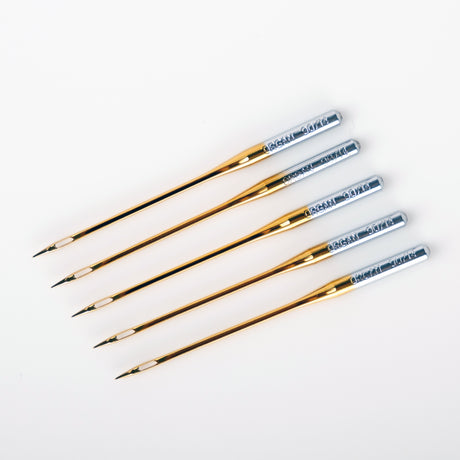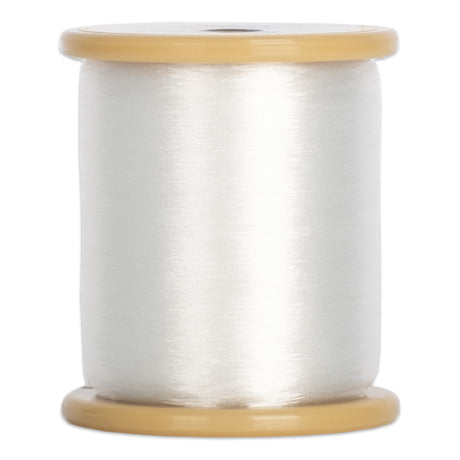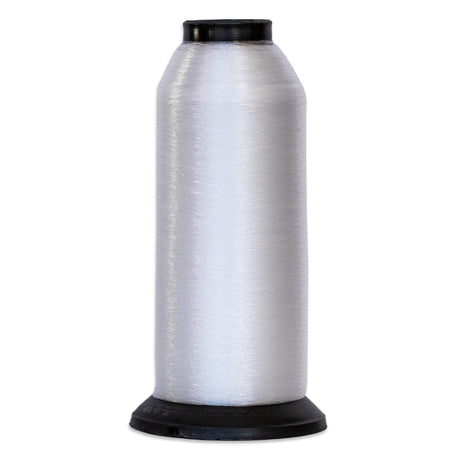Invisible Thread - Frequently Asked Questions
What needle should I use with invisible thread?
What needle should I use with invisible thread?
For home machines, we recommend a Topstitch #70/10 needle when sewing with Wonder Invisible Thread and Invisible Thread Poly. The Topstitch needle style has special traits that make it ideal for delicate threads. The deep groove that runs top-to-bottom along the shaft cradles the thread, and the extra-large eye, nearly twice as large as a Universal needle, lets it pass freely without creating excess friction or tugging.
These features are particularly beneficial with monofilament threads, which perform optimally with minimal tension and a burr-free thread path from the spool to the needle eye. On longarm machines, a #14 (3.0) needle works best for the same reasons. Using the right needle for your thread can make a significant difference by reducing thread breaks and enhancing stitch quality.
What applications and techniques can I use invisible thread for?
What applications and techniques can I use invisible thread for?
Invisible thread is like a quilting chameleon! It adapts beautifully to various techniques, keeping the spotlight on your fabric and quilt design rather than the thread.
For invisible appliqué, it creates a nearly seamless look where your stitches melt into the fabric. In stitch-in-the-ditch quilting, it locks the layers of your quilt sandwich together without drawing attention away from the quilt blocks. And for free-motion quilting, especially on busy or multicolored fabrics, it allows you to add subtle texture, movement, or background fills without changing thread colors.
Its versatility means you can experiment freely, knowing the thread will play a supporting role while your fabrics and quilt design take center stage.
When would I use an invisible thread vs. a cotton or polyester thread?
When would I use an invisible thread vs. a cotton or polyester thread?
Invisible thread is a perfect choice when you want your stitching to blend fully into the fabric, letting your quilt top or appliqué be the focal point instead of bold, visible stitches. It's ideal for situations where switching thread colors constantly would be tedious, like quilting across multicolored fabrics or working on intricate appliqué with varying hues.
Cotton or polyester threads are better choices when you want your stitching to be visible. Threads that are 40 wt. and heavier are the most visible for quilting or topstitching. Think of an invisible thread as your go-to for a no-show finish and cotton or polyester as your choice for adding flair to your quilt. Both have their place, and many quilters use cotton, monofilament, and polyester threads depending on their specific goals.
What is the difference between nylon and polyester monofilament threads?
What is the difference between nylon and polyester monofilament threads?
From a fiber perspective, nylon and polyester each bring their own strengths to the sewing table. Nylon monofilament, like our Wonder Invisible Thread, is soft and supple, which makes it a favorite for fine, delicate work. Monofilament threads aren't measured with the typical thread weight. composition. The diameter is measured in thousandths of an inch. It's considered an ultra-fine thread, measuring a mere 0.004 inches in diameter (about the same diameter as the hair on your head), making it exceptionally lightweight and blending beautifully into fabrics.
Polyester monofilament, such as our Invisible Thread Poly, is slightly thicker at .005 inch and offers more strength, which is especially helpful for quilting projects on a longarm machine or quilts that will get regular use or frequent washings.
Both of these invisible threads will stitch smoothly through the fabric and nearly disappear. Try them both and discover which fiber you prefer, based on the project and techniques, such as appliqué, stitch-in-the-ditch quilting, edge-to-edge quilting, and more.
I'm quilting with a monofilament/invisible thread, and it keeps breaking. What am I doing wrong?
I'm quilting with a monofilament/invisible thread, and it keeps breaking. What am I doing wrong?
You're not alone. Many quilters experience similar frustrations when they first start with invisible threads. The good news is that the fix often comes down to a few simple adjustments.
First, lower your top tension more than you might think. On a home machine, set it to about 1.0. On a longarm, skip two of the three holes in the three-hole thread guide and loosen the tensioner so the thread can move with minimal resistance.
It's best to start with looser top tension and tighten it gradually, rather than starting tight and fighting thread breaks as you loosen.
Second, use the right needle: a Topstitch #70/10 for home machines or a #14 (3.0) for longarms. The larger eye of the Topstitch needle protects delicate threads, such as monofilament, from excessive friction, reducing thread breaks at the needle.
Once your tension settings are dialed in and you're using the correct needle, you'll find that invisible thread can stitch smoothly and beautifully.



